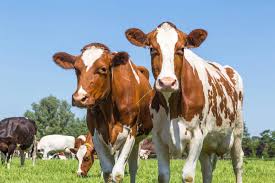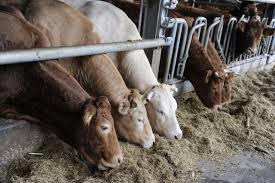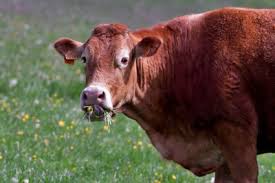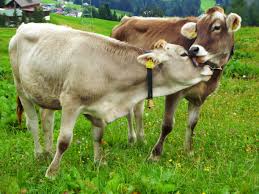This article provides basic knowledge of ruminant animals and the critical role they play in the Nigerian livestock sector. Some commonly used terminologies in describing cattle, sheep, and goats are defined to support better understanding of this agricultural topic.
Definition of Ruminant Animals in Agriculture
Ruminant animals are those with a four-compartment stomach: the rumen, reticulum, omasum, and abomasum. These animals are capable of ruminating or chewing cud, a process that helps them digest fibrous plant materials effectively.
Read Also: Best Snail Rearing Stocking Density for Best Results
Key Differences Between Ruminant Animals and Non-Ruminants

Ruminant animals have evolved with specialized digestive tracts that help them thrive on coarse herbage. Most carbohydrates stored in plant material are in forms that simple-stomached animals (monogastrics) cannot digest due to the presence of β-links in cellulose.
However, ruminants host microorganisms (bacteria, protozoa, and fungi) in the rumen and reticulum that can break down these β-links, releasing energy in the form of volatile fatty acids (VFAs). This forms a close symbiotic relationship benefiting both microbes and the ruminant animal.
The microbes enjoy a stable, nutrient-rich environment, while the animal benefits from the microbial waste products and predigested food, as well as from consuming the microbes themselves for nutrients.
The four-chambered stomach provides additional space, acting as fermentation vats where food is stored and processed. Examples of ruminant animals include cattle, sheep, goats, llamas, alpacas, and buffaloes. However, this article will mainly focus on cattle, sheep, and goats.
Role of Ruminant Animals in Nigerian Agriculture

Ruminant animals hold a significant position in Nigeria’s agricultural landscape due to their contributions to food production, economic support, and traditional practices.
1. Source of Meat in Nigerian Livestock Production: Among the 51 million herds of various ruminant classes, these animals contribute about 85% of the total national meat supply. Across Africa, sheep and goats contribute around 14% of meat supply. In Nigeria, the contribution from small ruminants (sheep and goats) is even higher, representing approximately 35% of the nation’s meat supply.
2. Source of Milk from Ruminants: There are an estimated 220 million dairy cows worldwide, producing about 430 million tons of milk annually. Africa produces around 10–30% of this total, with 14% of that coming from sheep and goats. In several African countries, milk from sheep and goats serves as a primary source of milk for household consumption.
3. Hides and Skins from Ruminant Animals: In addition to food, ruminants supply hides and skins. Leather derived from these animals has historically been a major source of foreign exchange. The well-known Moroccan leather is made from the skin of the Red Sokoto goat. While wool or hair production is not a major agricultural output in Nigeria, Africa produces approximately 37,000 tons of greasy wool yearly, representing just 1% of global production. Sheep skins are also used as clothing in highland regions of Ethiopia and Nigeria.
4. Use of Cattle for Draught Power in Agriculture: Cattle serve as an important source of draught power for farming, especially for peasant farmers who cannot afford mechanized equipment. This has significantly reduced reliance on costly machinery and has increased crop production in areas where bullocks are used. Cattle are also locally used for transport purposes.
5. Ruminants as a Source of Manure in Crop Production: Manure from ruminants enhances soil fertility. Faecal materials from animals are collected and used to fertilize farmlands. In particular, manure from tethered sheep and goats is often gathered and spread on crop fields to improve yields.
6. Social and Cultural Functions of Ruminants: Ruminant animals are considered a symbol of prestige and status among farmers. They represent social standing, serve as mobile banks for nomads, act as a form of insurance against crop failure for mixed farmers, and are used in religious rites and marriage ceremonies among various traditional communities.
Read Also: Seasonal and Daily Management Practices for Snail
Common Terms Used in Ruminant Animal Production

1. Cattle
i. Bull: Mature male bovine (cattle or buffalo)
ii. Cow: Mature female bovine that has given birth at least once
iii. Calf: Young cattle or buffalo of either sex
iv. Heifer: Young female cattle yet to give birth, closer to maturity than a female calf
v. Steer: Young male cattle castrated before maturity
vi. Stag/Bullock: Male cattle castrated after maturity
vii. Veal: Meat from young cattle fed only on cow milk
viii. Beef: Meat from cattle
ix. Parturition: Act of giving birth (calving)
x. Hide: Bovine skin
2. Sheep
i. Ewe: Female sheep that has lambed
ii. Ram: Adult male sheep used for breeding
iii. Lamb: Young sheep, usually under nine months or before weaning
iv. Cull: Ewe removed from breeding due to age, productivity, or undesirability
v. Maiden Ewe: Adult female sheep that has not been mated
vi. Gimmer: Female sheep aged six months (or from weaning) until first lambing
vii. Ewe Lamb: Female lamb
viii. Ram Lamb: Male lamb
ix. Hogg/Hogget: Sheep aged six months to two years
x. Wether: Castrated male sheep older than six months
xi. Mutton: Meat from mature sheep
3. Goat
i. Buck: Mature male goat
ii. Doc: Mature female goat
iii. Chevon: Meat from goats
iv. Kidding: Act of giving birth
v. Mohair: Hair from the Angora breed of goat
vi. Cashmere: Fine soft hair from the Cashmere goat
Do you have any questions, suggestions, or contributions? If so, please feel free to use the comment box below to share your thoughts. We also encourage you to kindly share this information with others who might benefit from it. Since we can’t reach everyone at once, we truly appreciate your help in spreading the word. Thank you so much for your support and for sharing!

